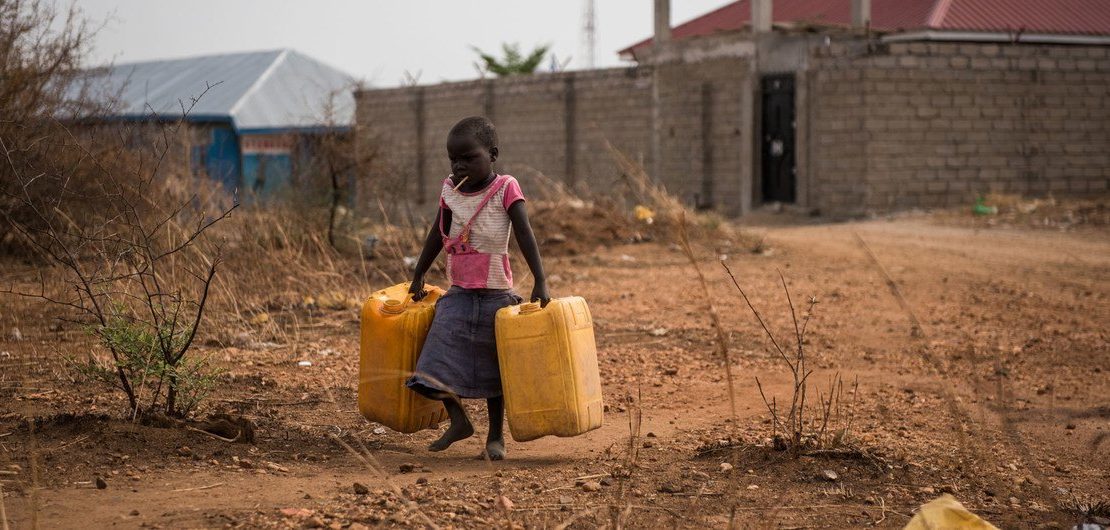- November 29, 2022
- Posted by: humanitarianweb
- Category: Humanitarian News

Something has to change in South Sudan because the number of people in need continues to rise every year and the resources continue to decrease.” This stated the Humanitarian Coordinator in South Sudan, Ms. Sara Beysolow Nyanti, alarming over the results of the 2023 South Sudan Humanitarian Needs Overview (HNO) released on 25 November. An estimated 9.4 million people, a staggering 76 per cent of South Sudan’s population, will have humanitarian and/or protection needs in 2023. This presents an increase of half a million people compared to 2022.
Ms. Nyanti emphasized that the deteriorating humanitarian conditions are worsened by endemic violence, conflict, access constraints, operational interference, public health challenges and climatic shocks such as flooding and localized drought. She further cited that the sub-national violence across the country has led to displacement, limitation of people’s access to critical humanitarian services, and livelihoods and disruption of humanitarian operations. The protracted displacement affects more than 2.2 million people, many of whom are unable to return to their homes for years and face major risks, including family separation and trauma.
Severe food insecurity will affect an estimated 8 million people, or 64 per cent of the total population, by the peak of the lean season between April and July in 2023. In conflict- and flood-affected areas, people’s access to food and income sources is severely hampered, due to displacement to new locations, disruption of delivery of food assistance and trade flows. In some places, people’s daily rations have been reduced due to funding. Many of the people who are highly food insecure, are in locations with chronic vulnerabilities worsened by frequent climate-related shocks, the macro-economic crisis, conflict and insecurity and low agricultural production.
Women and girls across all affected groups remain at higher risk of attacks while moving to access humanitarian services, to attend to family needs or while carrying out routine livelihood activities. “Physical violence, rape and other forms of gender-based violence will be a reality some 2.8 million people will face in 2023,” added Ms. Nyanti. Some 3.7 million children, adolescents and caregivers continue to be at risk of recruitment into local armed groups and other forms of abuse, including abduction and possible trafficking, and will need life-saving child protection services in 2023.
“While humanitarians continue to save lives, they continue to die”, stated Ms. Nyanti. On 18 November a local staff of an international non-governmental organization was shot dead during an armed attack bringing the total number of humanitarian workers killed in the line of duty since the beginning of 2022 to nine. “As we mourn the loss of our colleague, I reiterate my call to stop attacks on civilians and humanitarians, and to provide safe access. Violence cannot be used as a means of demanding aid,” said Ms. Nyanti speaking to the communities in need.
The Humanitarian Coordinator in South Sudan appealed to the government for leadership in increasing investments in peace and development, because only gains in these two areas will reduce humanitarian needs. “Pivoting to development requires a two-pronged approach of investing more in development and peace but also saving the lives of those on the brink. Peace is a prerequisite because we cannot reach those in humanitarian need or implement the development vision without peace”, she concluded.

pharmacy online australia Buy medicine online Australia Discount pharmacy Australia
https://eropharmfast.com/# Ero Pharm Fast
PharmAu24: online pharmacy australia – Pharm Au24
haga clic en, para Leer mas https://vitalsphere.space/chl/slimming/diet-flat-v/
Discount pharmacy Australia: Online drugstore Australia – Licensed online pharmacy AU
выберите ресурсы
gates of olympus 1000
Online drugstore Australia: pharmacy online australia – Online drugstore Australia
http://eropharmfast.com/# erectile dysfunction meds online
aqui https://topvitality.space/mexico/from-parasites/e-tox/
Этот интересный отчет представляет собой сборник полезных фактов, касающихся актуальных тем. Мы проанализируем данные, чтобы вы могли сделать обоснованные выводы. Читайте, чтобы узнать больше о последних трендах и значимых событиях!
Детальнее – https://nakroklinikatest.ru/
Ero Pharm Fast Ero Pharm Fast erectile dysfunction medication online
discount ed pills: cheapest online ed meds – Ero Pharm Fast
discover this
spy-casino 15 €
проверить сайт https://marvilcasino.xyz/lotereya/
hop over to these guys
gdfplay no deposit bonus code
explanation https://hottopcasino.com/online-casinos/beep-beep-casino/
blog here
https://hottopcasino.com/news/
кликните сюда играть
здесь https://marvilcasino.xyz/bonusy/
try here
https://hottopcasino.com/welcome-bonuses/
Visit This Link spy-casino
выберите ресурсы https://marvilcasino.xyz/lotereya/
kraken darknet – kraken актуальные ссылки, kra33at
check this coinbase login
kra33.cc – kra33 cc, kraken market
click resources coinbase login
visit here coinbase pro